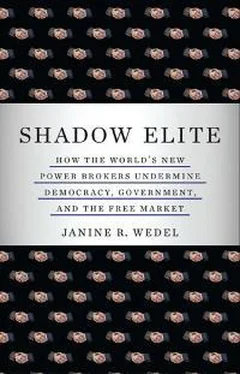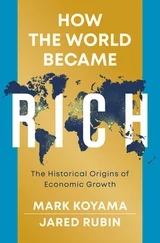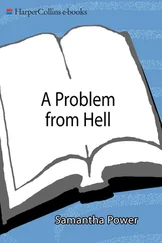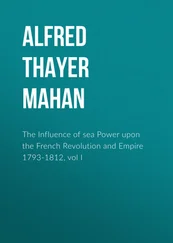59. See http://janinewedel.info/harvard.html. See also: Matt Taibbi, “Chubais: Our Media Darling,” The eXile 22, November 20, 1997, and http://janinewedel.info/harvardinvestigative_exile2.html; and Anne Williamson, Contagion .
60. This draft of the GAO report, dated August 23, 1996, was given to me by GAO staff on January 5, 1998.
61. In 2000 the U.S. Department of Justice alleged that Shleifer and Hay had been “using their positions, inside information and influence, as well as USAID-funded resources, to advance their own personal business interests and investments and those of their wives and friends” (United States Attorney, District of Massachusetts, “United States Sues Harvard and Others for False Claims Relating to USAID Programs in Russia,” Press Release, U.S. Department of Justice, September 26, 2000). Harvard was cleared of fraud charges but had to pay damages for breaching its contract with USAID. Harvard was prohibited from paying on behalf of either Shleifer or Hay. The exact amount of Hay’s fine was made contingent upon his earnings over the next decade. Marcella Bombardieri, “Harvard, teacher, and lawyer to pay US $30 m,” Boston Globe , 4 August 2005.
Investigations that have been initiated, then suspended, include the separate GAO investigation looking into Shleifer’s role on the Gore-Chernomyrdin Commission.
62. The Foreign Affairs article referred to here is Andrei Shleifer and Daniel Treisman, “A Normal Country,” Foreign Affairs , March/April 2004, www.foreignaffairs.org/20040301faessay83204/andrei-shleifer-daniel-treisman/a-normal-country.html.
For the settlement paid by Harvard being a record one, see David McClintick, “How Harvard Lost Russia,” Institutional Investor Magazine Online , January 13, 2006, p. 3, http://jboy.chaosnet.org/misc/docs/articles/shleifer.pdf.
63. For Summers’s side jobs in finance while president of Harvard, see Frank Rich, “Awake and Sing!,” New York Times , April 11, 2009, http://www.nytimes.com/2009/04/12/opinion/12rich.html?page-wanted=all. For more on his work at D. E. Shaw & Co, see: Louise Story, “A Rich Education for Summers (After Harvard),” New York Times , April 5, 2009, http://www.nytimes.com/2009/04/06/business/06summers.html?_r=1&partner=rss&emc=rss.
For Summers’s financial and Wall Street associations and its bearing on his policymaking in the Obama administration, see, for instance, Frank Rich, “Obama’s Make-or-Break Summer,” New York Times , June 21, 2009, http://www.nytimes.com/2009/06/21/opinion/21rich.html; Story, “A Rich Education for Summers”; Matt Taibbi, “Inside The Great American Bubble Machine,” Rolling Stone , July 2, 2009, http://www.rollingstone.com/politics/story/28816321/the_great_american_bubble_machine/3; and Matt Taibbi’s blog, at http://smirkingchimp.com/thread/22127.
64. According to the Web site of Delin Development, Hay has worked for the company since 2005. The company describes itself as “a real estate development company with contracts in the Ukraine, Russia, and other Eastern European countries. The company specializes in office, residential and retail buildings; over $1 billion has been invested in upcoming projects.” With regard to Hay, the Web site states that “Jonathan has been involved in real estate investment and development in Russia and Ukraine for more than 10 years. Since 2005 Jonathan has had operational responsibility for Delin’s real estate development activities in Ukraine.” See http://www.delin-d.com.
65. “Excellence without a Soul: Higher Education and the Shaping of Moral Character,” Leaders on Ethics: Real-World Perspectives on Today’s Business Challenges , John C. Knapp, ed. (Santa Barbara, CA: Greenwood Publishing Group, Inc., 2007), p. 69.
Notes to Chapter 6
1. Interview with Stephen Green, August 30, 2004; see also Stephen Green, “Damage Caused by ‘Friendly’ Spies,” Christian Science Monitor , May 22, 1989, pp. 18–19. On the 1978 investigation of Wolfowitz, see also: Philip Giraldi, “Saving Feith,” The American Conservative , March 12, 2007, http://www.amconmag.com/article/2007/mar/12/00024/.
2. The first instance referenced here was reported by Sidney Blumenthal in “Richard Perle, Disarmed but Undeterred,” Washington Post , November 23, 1987, p. B1. The second instance was reported by investigative journalist Seymour Hersh in “Kissinger and Nixon in the White House,” Atlantic Monthly , May 1982, http://www.theatlantic.com/issues/82may/hershwh2.htm.
3. For Perle enlisting Feith as an intern, see Douglas J. Feith, War and Decision: Inside the Pentagon at the Dawn of the War on Terrorism (New York: HarperCollins Publishers, 2008), pp. 26–27; http://www.
lib.washington.edu/specialcoll/portals/pnw/Jackson/2-Reference/5-Staff/Staff.html. See also Stephen Green, “Damage Caused by ‘Friendly’ Spies,” Christian Science Monitor , May 22, 1989, pp. 18–19. On the 1982 investigation of Feith, see also Philip Giraldi, “Saving Feith,” The American Conservative , March 12, 2007, http://www.amconmag.com/article/2007/mar/12/00024/.
4. See, for example, David S. Hilzenrath, “The Ultimate Insider: Richard N. Perle’s Many Business Ventures Followed His Years as a Defense Official,” Washington Post , May 24, 2004, p. E01, http://www.washingtonpost.com/ac2/wp-dyn/A50388–2004May23?language=printer; and Jack Shafer, “Richard Perle Libel Watch, Week 4: He’s Just Too Busy Resigning to Sue This Week!” Slate.com, April 2, 2003, http://slate.msn.com/id/2081053/.
5. In his book Feith says that Fred Iklé was the first to approach him about this position and helped talk him into considering the job (Feith, War and Decision , p. 42). For an astute analysis of Feith’s book, see Robert Jervis, “War, Intelligence, and Honesty: A Review Essay,” Political Science Quarterly 123, no. 4 (Winter 2008–2009), pp. 645–675.
The same pattern—of getting into hot water with government authorities, then getting each other off and even promoting one another afterward—also played out with Perle’s friend Stephen J. Bryen. In 1979, Bryen, a staff member on the Senate Foreign Relations Committee, was investigated by the Justice Department and the FBI for “unauthorized disclosure” of classified information. He resigned under pressure, and the charges were quietly dropped. See Michael P. Saba and Evan Hendricks, The Armageddon Network (Brattleboro, VT: Amana Books, 1984), especially chapter 6. A few years later, Perle, after being named assistant secretary of defense for international security policy, not only lobbied hard enough to bring Bryen back into government as his deputy but saw to it that he received top security clearances. Alan Weisman, Prince of Darkness: Richard Perle: The Kingdom, the Power & the End of Empire in America (New York: Union Square Press, 2007), pp. 68–69.
6. Author’s interview with Stephen Green, August 30, 2004.
7. Narratives by former insiders and investigative reports of congressional committees, inspectors general, investigative journalists (see especially the work of Jim Lobe, Seymour Hersh, Jane Mayer, and Laura Rozen) and reputable bloggers (Steve Clemons’s The Washington Note , http://www.thewashingtonnote.com/) have established at least some of the pivotal parts played by members of the group (as well as other players). See also Right Web: http://rightweb.irc-online.org/. Conversations with people who are or have been close to the inner core, including “defectors” from it, as well as functions I have attended organized by Neocon organizations, have helped fill in some of the gaps.
8. I look into the Neocon core members’ activities, roles, relationships, sponsors, and organizations they empower, and how they shift and pool them—both inside and outside government—to achieve mutual goals. (I do not attempt to summarize the reams of material on record, or detail all, or even most of, the players’ interconnections. Instead, I provide representative examples based on well-confirmed accounts.)
Читать дальше












